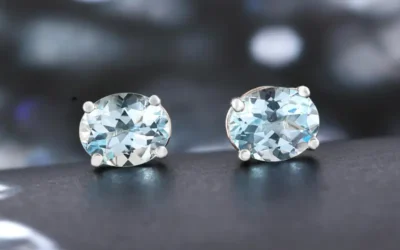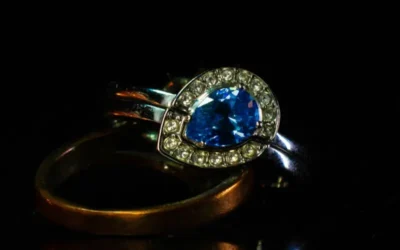Why Water Matters in Diamond Production
“Every diamond tells a story—but how much water does that story consume?” In an era where consumers are increasingly conscious of their environmental footprint, the jewelry industry is under scrutiny for its water usage. Diamonds—long prized for their brilliance and rarity—come with hidden costs beneath the earth’s surface or within high-tech laboratories. From refreshing cooling towers to dust suppression systems, water is a critical element at every stage of diamond production.
As brands tout sustainability and ethical sourcing, understanding water footprints in both mined and lab-grown diamonds becomes crucial for buyers who want sparkle without sacrifice. This article dives deeply into how much water is required to bring a diamond from rough to brilliant, comparing traditional mining techniques against modern lab-grown processes. You’ll learn why water matters, how different production methods stack up on usage and impact, and what questions to ask before choosing a diamond.
By the end, you’ll have a clear view of which paths are truly water-wise and how you can make “sustainable diamond choices” that align with eco-friendly jewelry ideals. Whether you’re an ethical retailer, a consumer seeking transparency, this guide will equip you to evaluate water usage in diamonds with confidence.
Understanding the Water Footprint of Diamonds
What Is a Water Footprint?
 A water footprint measures the total volume of freshwater used to produce a good or service. For diamonds, this includes everything from the water used to process and cool equipment in mines, to the water consumed in synthetic growth chambers in labs. Expressed in liters or gallons per carat, a water footprint reveals the hidden water cost behind each sparkling gemstone. Understanding this metric is more than a numbers game—it highlights potential stress on water-scarce regions and helps brands benchmark their sustainability efforts against industry standards.
A water footprint measures the total volume of freshwater used to produce a good or service. For diamonds, this includes everything from the water used to process and cool equipment in mines, to the water consumed in synthetic growth chambers in labs. Expressed in liters or gallons per carat, a water footprint reveals the hidden water cost behind each sparkling gemstone. Understanding this metric is more than a numbers game—it highlights potential stress on water-scarce regions and helps brands benchmark their sustainability efforts against industry standards.
Globally, benchmarks vary widely depending on geography, mining methods, and technological investments. For comparison, some agricultural crops consume thousands of liters per kilogram, while diamond production tends to focus water more intensively on machinery cooling and mineral separation. These benchmarks provide retailers and consumers a yardstick: a mined diamond with a 500-liter per-carat footprint may be far more water-hungry than a lab-grown alternative at under 100 liters per carat.
Key Drivers of Water Consumption
Several core processes drive water consumption in diamond production:
- Cooling Systems: Heavy industrial equipment, whether deep underground or in sealed growth chambers, relies on water chillers to maintain stable temperatures.
- Processing & Separation: In mining, water facilitates the crushing, washing, and density separation of ore. In labs, ultra-pure water cleans growth vessels and removes residual gases.
- Dust Suppression: Open-pit mines spray water constantly to suppress dust, reducing airborne particulates but at the expense of large water volumes.
- Chemical Usage: Mineral processing often uses acids or solvents mixed with water, generating contaminated wastewater that requires treatment.
Mapping these drivers across production methods reveals opportunities for efficiency. Lab-grown facilities often recycle water in closed-loop systems, while mines that invest in tailings reclamation and water treatment can mitigate surface-water losses. Understanding where water flows—when and how much—lays the groundwork for targeted conservation strategies.
The Thirst of Traditional Diamond Mining
How Much Water Does Mining Consume?
Traditional diamond mining is water-intensive by nature. Estimates suggest that mining one carat of diamond can require up to 126 gallons (approximately 477 liters) of water. This figure encompasses everything from site preparation and ore washing to dust control on haul roads. In open-pit operations, vast tracts of rock are removed, requiring continuous water sprays to keep dust airborne levels in check. Groundwater extraction may be necessary to dewater shafts in underground mines, while river diversion projects channel local watercourses around mining pits.
Such extensive water consumption is further amplified in arid regions. For example, mining operations in Chile’s Atacama Desert—one of the driest places on earth—have been documented diverting precious surface water from fragile ecosystems to sustain extraction activities. As a result, local communities reliant on limited water sources face heightened scarcity, posing ethical and operational challenges for diamond producers operating in water-stress zones.
Environmental & Social Impacts
Water usage in diamond mining carries both environmental and social repercussions. Chemically-enhanced washwaters can pick up heavy metals, sulfuric acid residues, and even trace mercury, contaminating waterways used by nearby villages. Long after mines close, abandoned pits and tailings dams can seep polluted water into groundwater aquifers, creating persistent health risks. Australia alone hosts over 60,000 derelict mine sites, many linked to ongoing water contamination that affects soil and drinking supplies.
Socially, water scarcity from mining aggravates local tensions. Farming communities downstream may find their irrigation canals running dry, threatening food security. Indigenous populations, whose cultural ties to river systems run deep, can see sacred sites degraded or lost entirely to mining infrastructure. In regions where water is already a precious commodity, diamond extraction can tip the balance, making water a line of contention between corporations and communities.
Industry Efforts to Reduce Water Use
Recognizing these impacts, some mining companies have adopted water-recycling initiatives and invested in zero-liquid discharge systems. By capturing wastewater from ore processing and treating it on site, mines can reuse up to 80% of their water, significantly curbing freshwater withdrawals. Adherence to guidelines from the International Mine Water Association (IMWA) and the Responsible Jewellery Council encourages best practices in water management, requiring regular audits, transparent reporting, and community engagement.
While such measures reduce the thirst of mining operations, they don’t eliminate it entirely. The challenge lies in retrofitting older mines and scaling innovations across the industry. As water stress grows globally, mining companies that excel in water stewardship may gain competitive advantage with retailers and consumers demanding “sustainable diamond choices.”
Lab-Grown Diamonds: A Drop in the Bucket?
Production Methods & Water Use
Lab-grown diamonds—created through HPHT (High-Pressure High-Temperature) or CVD (Chemical Vapor Deposition)—present a stark contrast in water use. Typical lab facilities consume around 18 gallons (68 liters) of water per carat, mostly for equipment cooling and cleaning growth reactors. In HPHT processes, water circulates through chillers to maintain the 1,300–1,600°C temperatures required for crystal formation. CVD chambers, operating at lower pressures and temperatures, still rely on water-based coolants to dissipate heat generated by plasma or microwaves.
Modern labs employ closed-loop systems, filtering and reusing up to 90% of water internally. Ultrafiltration and reverse-osmosis membranes remove impurities, enabling repeated cycles without significant water loss. By contrast, traditional mines struggle to achieve such high recycling rates due to the sheer volume and contaminant load of mine runoff.
 Sustainability Advantages
Sustainability Advantages
Beyond lower water consumption, lab-grown diamond production avoids habitat disruption and large-scale water diversion entirely. No open pits scar the landscape, and groundwater aquifers remain undisturbed. Chemical runoff is minimized because growth media in laboratories tends to be purer and less chemically aggressive than the acids and solvents used in mineral separation. This translates to reduced wastewater treatment requirements and lower risks of downstream pollution.
Energy use remains a concern—especially when electricity comes from fossil-fuel-powered grids—but water savings are a significant sustainability win. Brands that pair lab-grown diamond production with renewable energy sources further reduce their overall environmental footprint, offering consumers genuine “eco-friendly jewelry” alternatives.
Addressing Criticisms
Critics point out that lab facilities can be energy-intensive, potentially shifting the environmental burden from water to carbon. However, many state-of-the-art labs now invest in on-site solar arrays or purchase green power credits to offset their electricity use. Additionally, the controlled environment of labs allows for easier implementation of efficiency upgrades, unlike sprawling mining sites.
Furthermore, as technology advances, energy requirements per carat are declining, just as water-recycling systems have become more efficient. When comparing footprints side by side, lab-grown diamonds consistently outperform mined counterparts in water metrics, making them a compelling choice for water-conscious consumers.
Side-by-Side Comparison: Lab-Grown vs. Mined
| Metric | Mined Diamonds | Lab-Grown Diamonds |
|---|---|---|
| Water Use (per carat) | ~126 gallons (477 L) | ~18 gallons (68 L) |
| Recycling Rate | 40–60% (with systems) | Up to 90% |
| Habitat Impact | High (open pits) | Negligible |
| Chemical Runoff | Significant | Minimal |
| Transparency & Certs | RJC, Fairmined | SCS-007, EMERALD® |
From raw numbers alone, lab-grown diamonds deliver roughly an 85% reduction in water use per carat. Life-cycle analyses further underscore these savings: factoring in post-production polishing, cutting, and distribution, lab diamonds still consume far less water overall.
Certifications such as SCS-007 for laboratory processes and Fairmined for responsible mining provide third-party validation, but lab facilities often offer more granular water-usage disclosures. Whether you prioritize absolute volumes or recycling efficiency, lab-grown diamonds stand out as water-efficient solutions.
Strategies to Reduce Water Usage Across the Industry
Technological Innovations
Innovations like dry crushing—using mechanical force rather than water to break ore—are gaining traction in mining, slashing water needs at early processing stages. Closed-loop cooling towers, which capture evaporative losses and recycle condensate, can be retrofitted into both mines and labs. Zero-liquid discharge plants push treatment further by recovering nearly all process effluent for reuse or safe disposal as solid salts.
Best Practices in Water Management
Rainwater harvesting systems can supply up to 30% of a facility’s non-potable water requirements, reducing reliance on local sources. On-site treatment plants employing sedimentation, filtration, and biological reactors enable both mines and labs to treat wastewater to near-clean standards. Proper monitoring of water-quality parameters—pH, turbidity, heavy metals—ensures treated water meets stringent reuse criteria, safeguarding ecosystems.
Certification and Reporting
Adopting frameworks like the Responsible Jewellery Council’s water stewardship standards or the Alliance for Responsible Mining’s protocols fosters transparency. Regular third-party audits and public disclosures build consumer trust, demonstrating that brands measure, manage, and improve water performance over time. Eco-labels such as Water Stewardship Certified signal to buyers that water conservation isn’t an afterthought but a core operational principle.
Addressing Common Myths
Myth 1: “Lab-Grown Diamonds Aren’t Real.”
In truth, lab-grown diamonds share identical chemical composition and crystal structure with mined stones. Advanced analytical techniques confirm that lab diamonds have the same optical and physical properties as their natural counterparts.
Myth 2: “Mining Companies Always Restore Ecosystems.”
While some mines invest heavily in rehabilitation—replanting native vegetation and refilling pits—many abandoned sites remain derelict, with over 60,000 in Australia alone still leaching contaminants into water systems. Restoration success varies greatly by operator and region.
Myth 3: “All Lab-Grown Diamonds Are 100% Sustainable.”
Not all lab facilities use renewable energy. Buyers should look for brands that disclose both water and energy sources. Choosing a lab-grown diamond powered by solar or wind further enhances sustainability credentials.
How to Make an Informed Choice
 When selecting a diamond, ask retailers to disclose water-usage figures and sourcing practices. Inquire whether lab-grown diamonds are produced with renewable energy and what recycling rates their facilities achieve. Look for respected certifications—Fairmined verifies responsible mining; SCS-007 and EMERALD® validate sustainable lab processes.
When selecting a diamond, ask retailers to disclose water-usage figures and sourcing practices. Inquire whether lab-grown diamonds are produced with renewable energy and what recycling rates their facilities achieve. Look for respected certifications—Fairmined verifies responsible mining; SCS-007 and EMERALD® validate sustainable lab processes.
Ethical brands leading in water stewardship include those that publish annual sustainability reports, offering transparent dashboards of water inputs, recycling percentages, and wastewater treatment outcomes. By prioritizing such information, you ensure your purchase supports operations that value water as a shared resource.
Conclusion: The Future of Diamonds Is Clear
Water scarcity is a growing global concern, and luxury industries must rise to the challenge. This comparison makes one thing clear: lab-grown diamonds offer substantial water savings without compromising on quality or brilliance. As production techniques improve and renewable energy adoption accelerates, their environmental profile will only strengthen.
Choosing a diamond today means considering not just carat and clarity, but the water story behind that sparkle. Opt for transparency, certifications, and brands committed to preserving freshwater for communities and ecosystems. With water-wise diamond choices, you can enjoy the timeless allure of gems while safeguarding our planet’s most precious resource.
FAQs
- What is the water footprint of a mined diamond? Typically around 126 gallons (477 liters) per carat, varying by location and mining method.
- Do lab-grown diamonds use less water? Yes—around 18 gallons (68 liters) per carat—thanks to closed-loop cooling and cleaning systems.
- How can I verify a diamond’s water sustainability? Request water-usage disclosures and look for certifications like SCS-007 for lab-grown and Fairmined for mined stones.
- Are there certifications for low-water diamonds? Yes—seek out eco-labels such as Water Stewardship Certified or Responsible Jewellery Council endorsements for detailed water-management reporting.
By arming yourself with knowledge, you become an advocate for sustainable diamond production—one carat at a time.






